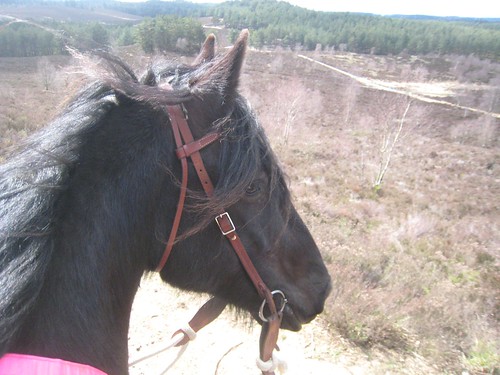This article by Mark Rashid is a typically insightful look at the use of tools in training.
There are tools I always use – rope halters with a spliced 12′ line – and tools I sometimes use such as flags, training sticks, dressage whips, crops or lariats. These aren’t things I use every day, but I find it very useful to keep them in the toolbox.
At various stages in my development as a horseman I have needed these things. I simply couldn’t get whatever I was working on at the time to work without them. That still happens – sometimes with a new horse I will use a flag to amplify the energy I am producing so the horse I am working with can figure out it would be useful for them to tune into me. I suspect that part of the reason that Mark doesn’t need tools like that is that he has so much more control over his energy and intent that he can get by on those alone, and it is my intention to be the same one day. I remember watching Steve Halfpenny demonstrate something and then drop the training stick and say “I need you to see that this is coming from me and not the tools” – it is really easy for us, as we learn, to see someone using a tool and assume that the tool is how they are achieving their goal. Whenever I am using a training tool of some kind, I am trying to see ways to avoid needing it next time around, learning to let go of them is part of the process of refinement.
In the opposite direction, I will often suggest my students try using a particular tool because they haven’t yet got the level of refinement that I have and I’m not a good enough teacher to pass on my expertise immediately. I want people I am helping to be able to feel what it is like when something is working correctly. Once they have that feeling we can begin working on using the tools less, until we are working from feel alone, but a lot of the time if we don’t start with something to make up for that lack of refinement, it makes their job harder. I always try to make the point that the training tool is Plan B and that once we get everything working according to Plan A we should be able to dispense with it altogether. Training tools are typically a physical solution to a communication problem and those are somewhat different domains, so they are seldom the best fit if you are interested in getting to how your horse feels.
As for me, although I do still go back to that toolbox, it feels as though the more I do, the less necessary it becomes. These days I don’t mind going back to things that I have used in the past because it happens increasingly infrequently. I think of it as something like the progress to recovery after a broken leg- you might start out needing a wheelchair, then crutches, then maybe a stick and later you only need the stick occasionally, but you need all those things until you get to where you can walk unassisted and if you need to use one of them again for some reason, there is no shame in that. You just can’t let yourself become dependent on it.
